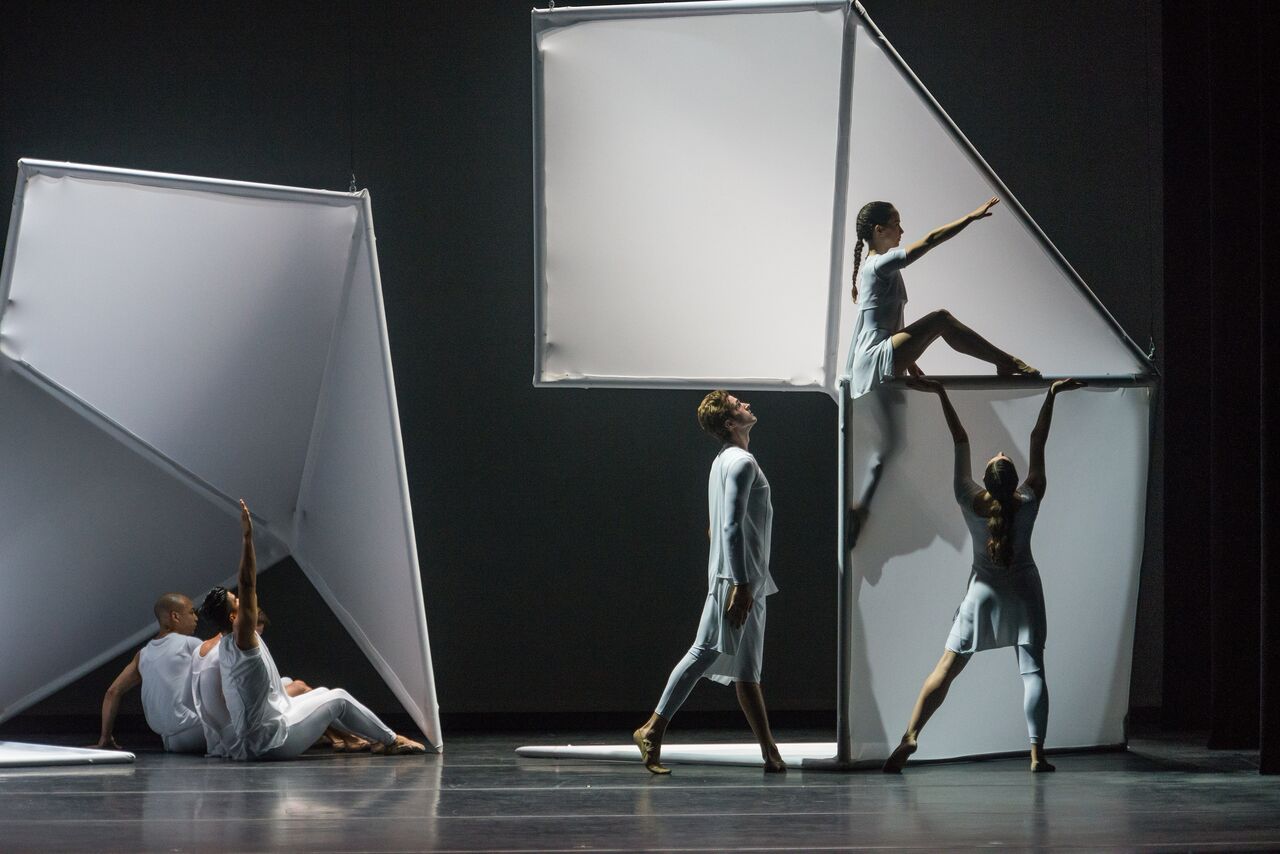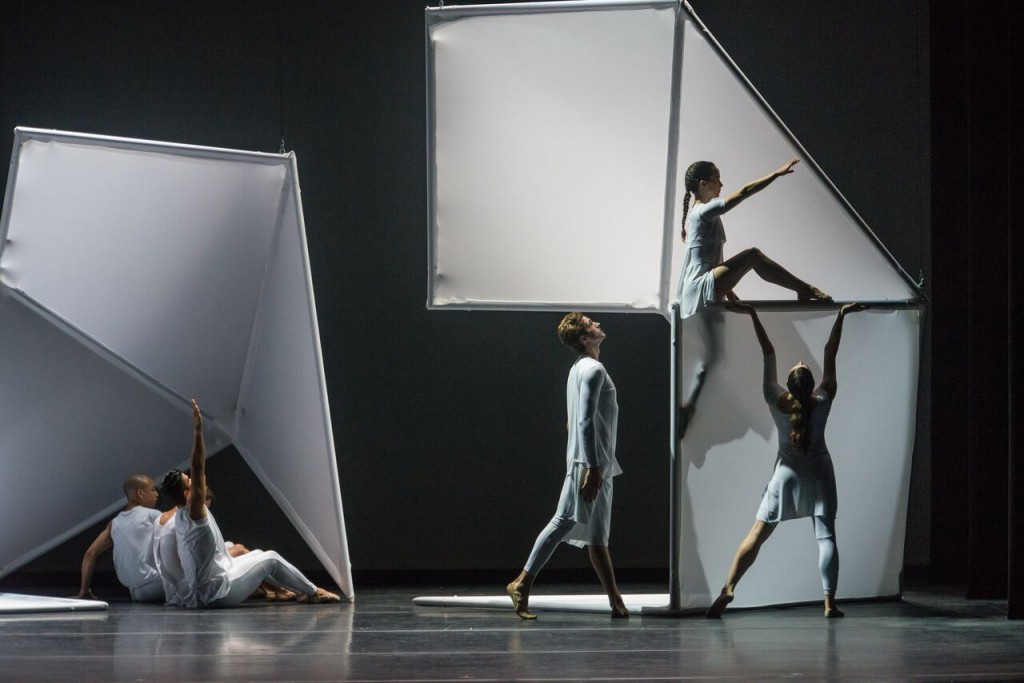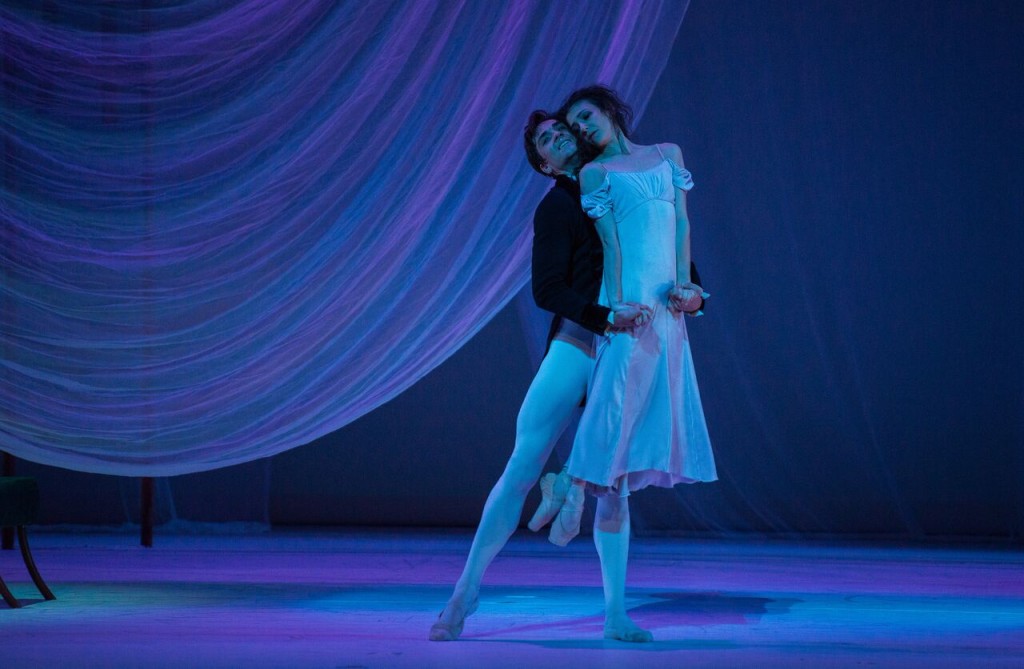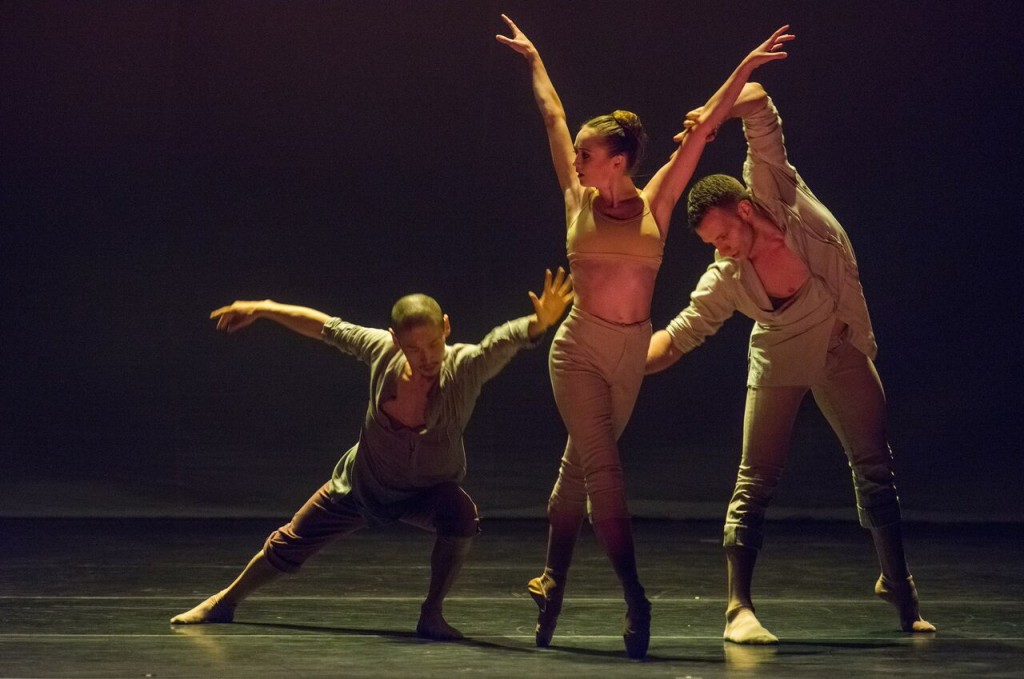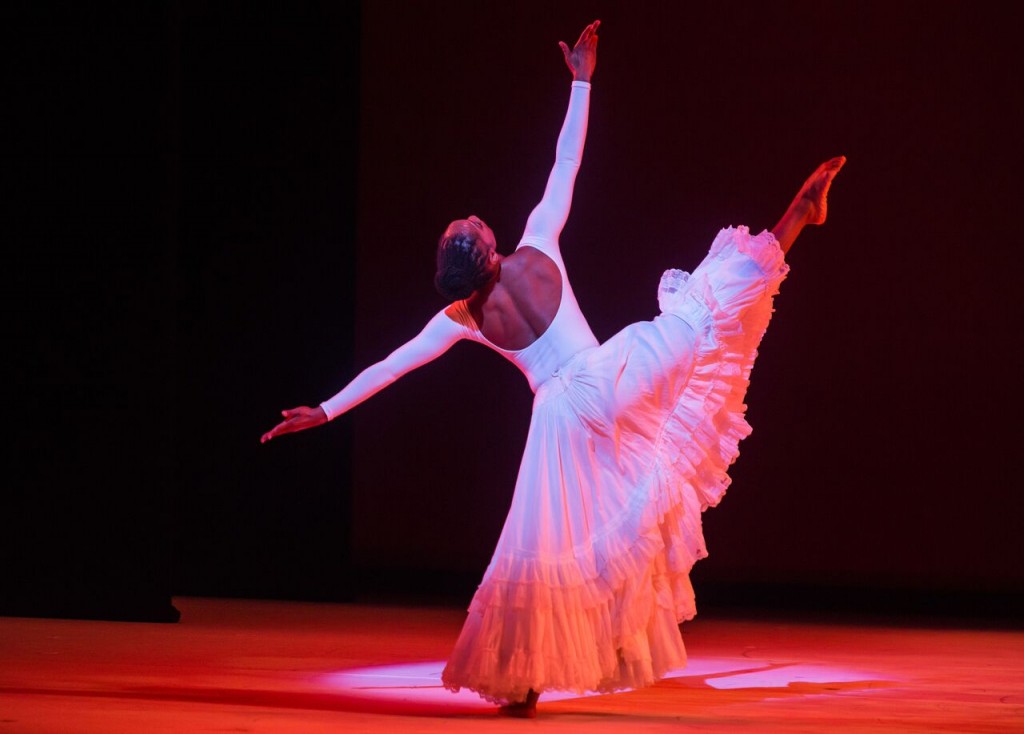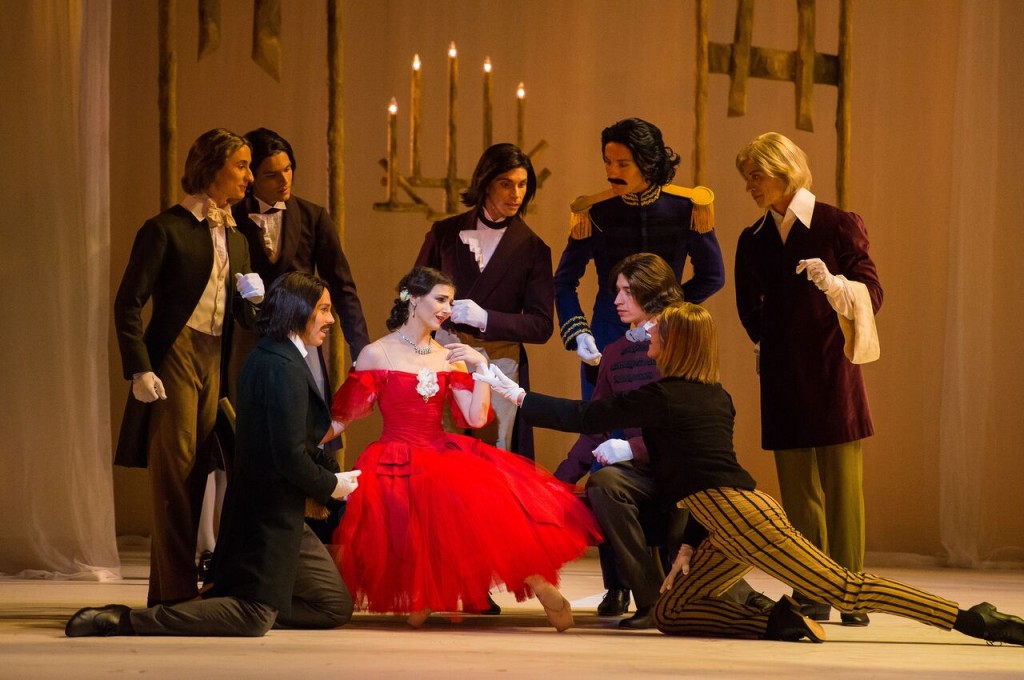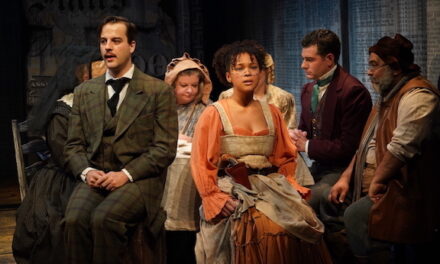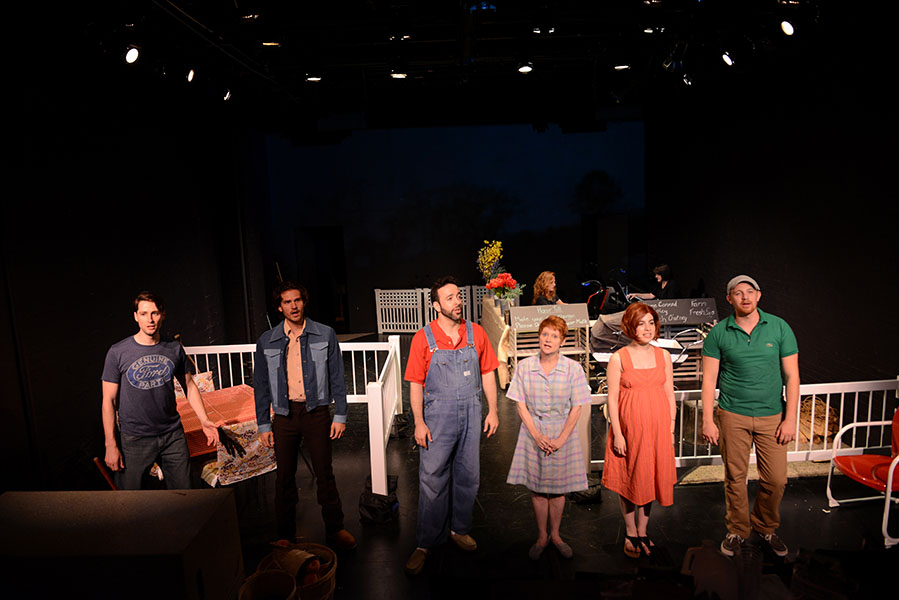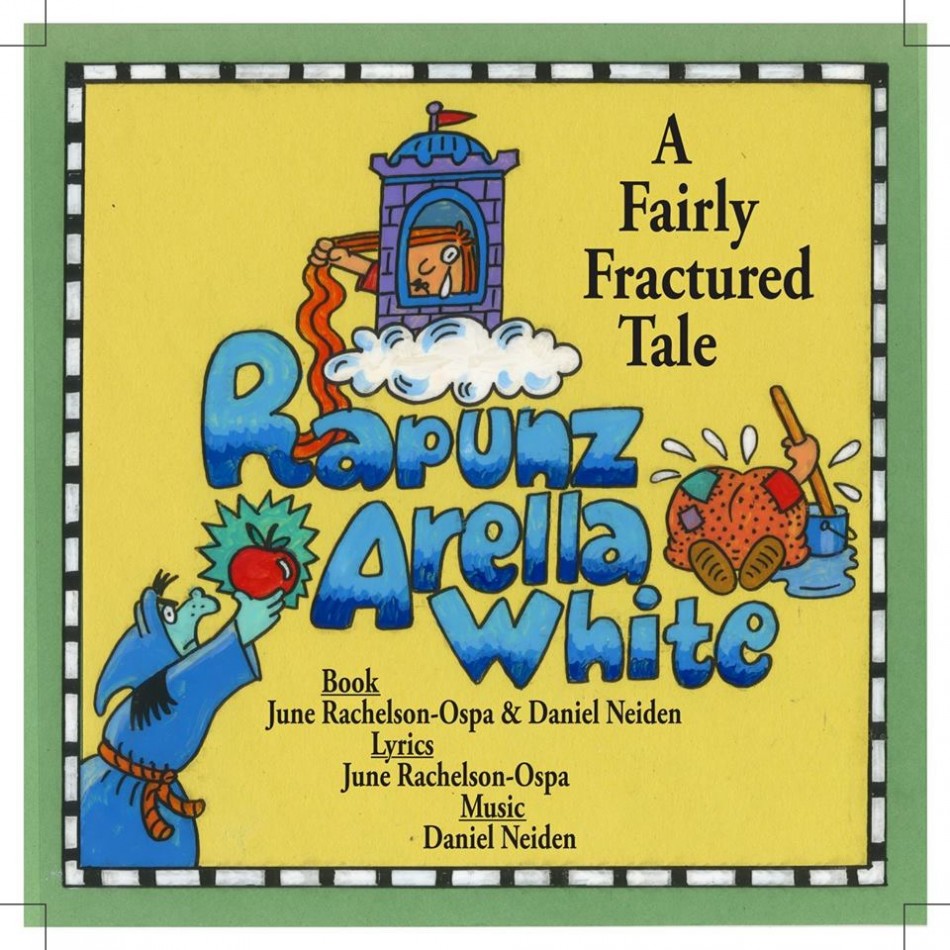An uneven, but varied program meant to please an undemanding audience.
By Joel Benjamin
Program Four of this year’s Fall for Dance was uneven, but true to the event’s mission of presenting different types of dance to a receptive, if undemanding audiences.
The first work was Jessica Lang and Steven Holl’s “Tesseracts of Time,” performed by Jessica Lang Dance to a combination of music by David Lang, Morton Feldman, John Cage, Iannis Xenakis and the ubiquitous Arvo Pärt. It was the most stylish and cogently constructed work of the evening, a true company work in which the ebb and flow of the choreography gave every one of the nine dancers a chance to be center stage. The emphasis, though, was on the ensemble moving in front of, on and under Dimitra Tsachrelia’s geometrically imaginative architectural set pieces lit dramatically by Nicole Pearce. Bradon McDonald’s simple, paneled costumes were first all black and then all white to match the sets.
Performed in four sections, “Tesseracts” featured a balletic modern dance vocabulary. The ensemble kept breaking up into mirror image trios and duets that were absorbed as the other dancers zipped past them in quick trips across the stage involving swift somersaults and sudden lineups. The choreographic team created a wonderful whirl of a ballet with beautiful structures (huge loops and mobile tents) enhancing the stage picture.
“Fall” was the Royal Ballet of Flanders’ contribution to the program, a minor work subtitled an “ode to autumn,” although the mood was more wintry than autumnal. Internationally admired choreographer Sidi Larbi Cherkaoui used the oft-choreographed-to music of Arvo Pärt. (Isn’t it time that dance makers give Pärt’s music a pass?) His fourteen Flanders dancers, a motley crew evoked a pleasant community, their interactions filled the stage. They communicated with gentle partnering, nudging gestures and glances. The lighting by Fabiana Piccioli (who also designed the horizontal patterned backdrops) was mostly drearily dark, even at the end when several dancers seemed to want to have good time.
Alvin Ailey’s “Cry” was choreographed by Mr. Ailey for Judith Jamison, directrix emerita of the Alvin Ailey American Dance Theater. Demetia Hopkins-Greene was given the impossible task of squeezing some excitement from a solo that was never a particularly well choreographed piece. It always depended on Ms. Jamison’s electric performing style, some great soundtrack songs and a pretentious program note: “For all Black women everywhere—especially our mothers.” The steps are simple, mostly undulating walks, runs, passionate reaching, high kicks and strong acting skills. Ms. Hopkins-Greene is lovely with a flow to her dancing that is enviable, but she is a lightweight, more suited to lyrical works than dramatic social statements.
The Sarasota Ballet contributed Frederick Ashton’s “Marguerite and Armand” (1963) choreographed to an over-the-top Liszt piano score, here played with excellent excitement by Matei Varga. “Marguerite and Armand” took advantage of the incredible popularity of the Margot Fonteyn/Rudolf Nureyev partnership. Ashton tailored the work—most definitely a “vehicle”—to the rapidly diminishing classical technique of Fonteyn, while still showcasing her purity of line, her musicality and her fine acting skills. Nureyev’s byronic style informed Ashton’s vision of Armand with lots of melodramatic cape waving and ardent partnering. It has never really worked with other casts, no matter how famous or talented, and such was the case with this Sarasota staging which sadly revealed all the deficiencies of the outdated choreography and staging.
As the curtain rose on Cecil Beaton’s wispy, curtain set, it was hard to refrain from laughing at the terrible wigs on the male contingent of the Sarasota Ballet as they stood stiffly around the borders of the set observing the action. (The Royal Ballet always had first rate character acting in this ballet, helped by first rate costuming and grooming.) The Sarasota’s men looked lost and unprofessional.
Marguerite was the Roumanian ballerina Alina Cojocaru whose delicacy was totally appropriate for the role. Friedemann Vogel, another dancer from Roumania, was far too young and fey for Armand and never got the hang of the cape waving. As Armand’s father, Johan Kobborg had gravity, but never emanated the power that its original interpreter, Michael Somes, a powerful presence, did.
Fall for Dance 2016 (September 26 – October 8, 2016)
New York City Center
131 West 55th Street, between 6th & 7th Avenues
New York, NY
For tickets, call 212-581-1212 or visit www.NYCityCenter.org
Photos: Stephanie Berger


